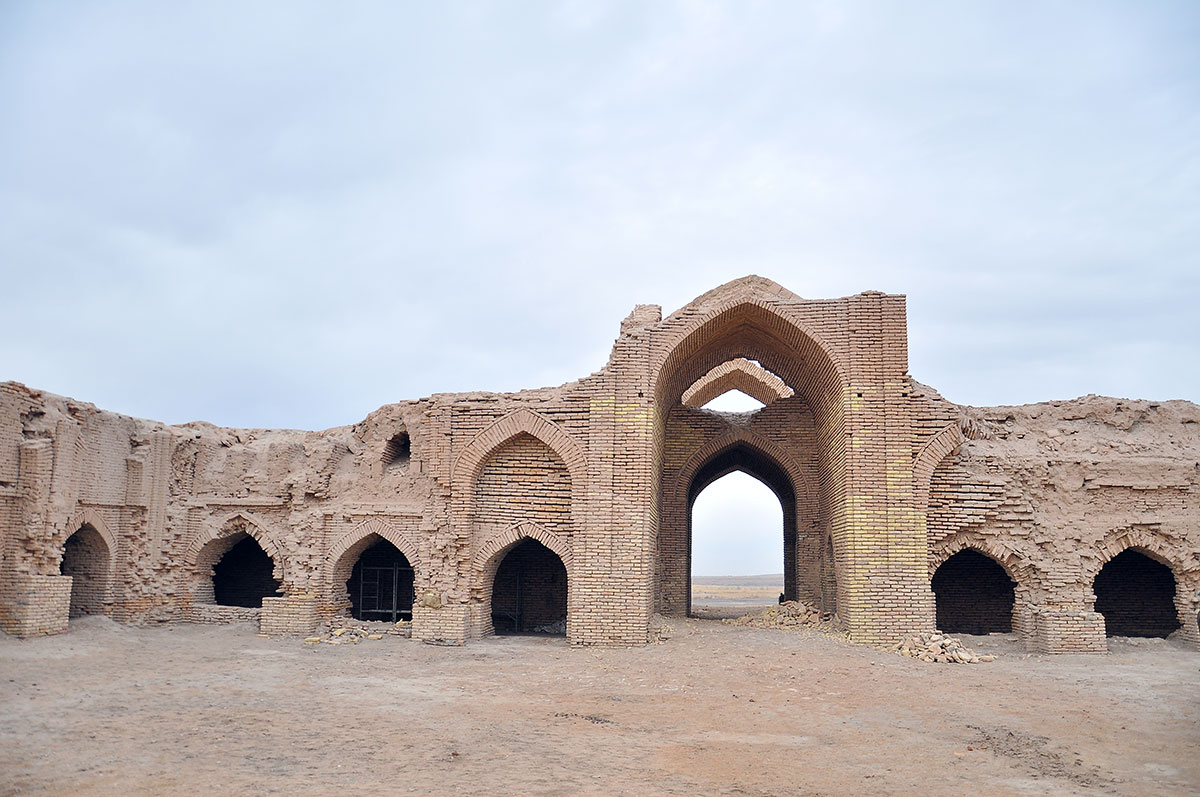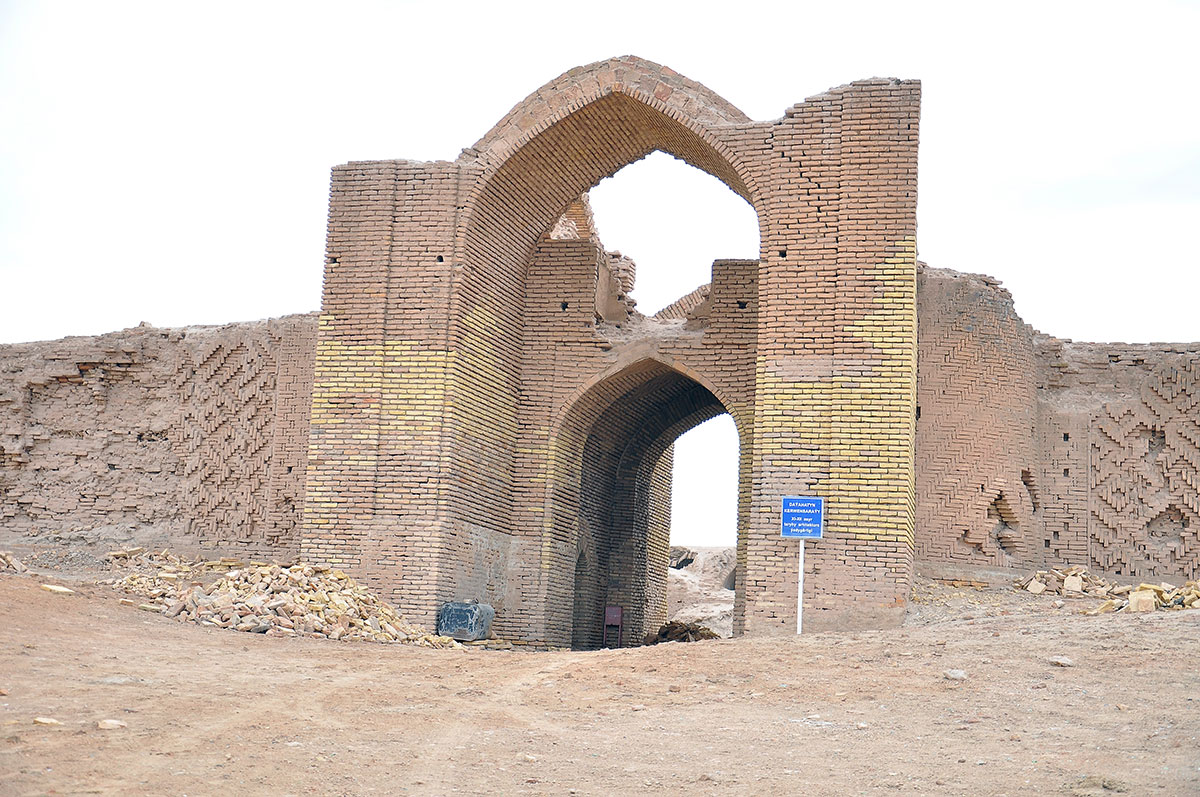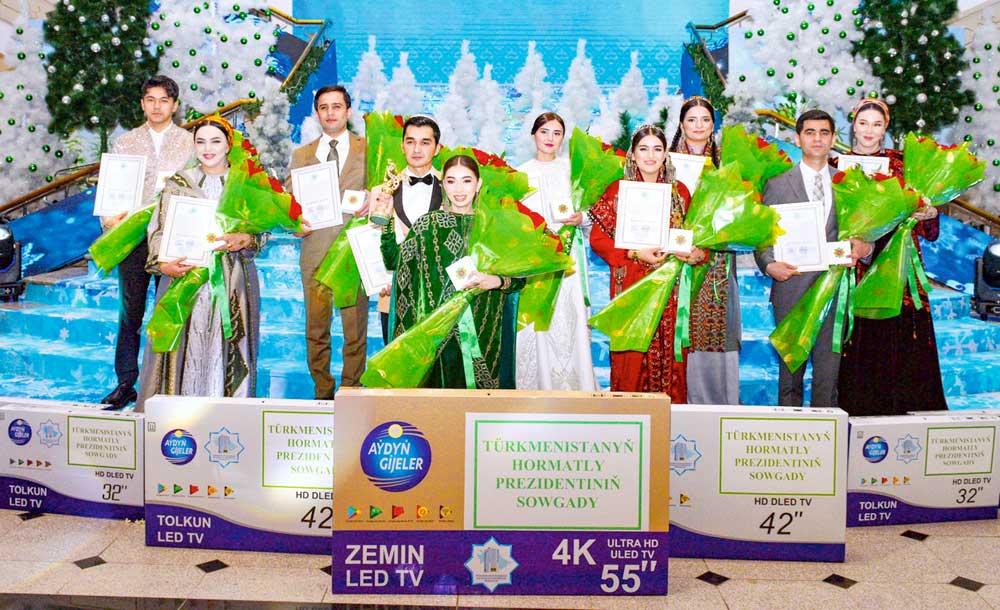Within the program Ambassadors Fund for Cultural Preservation at the support of the Embassy of USA in Turkmenistan, the works are carried out on restoration and repair of Dayahatyn Caravansary, located along the Great Silk Road, 170 kilometers to the north from Turkmenabat city, in the area of Gabakly gengeshi of Danev etrap of Lebap velayat. Within the framework of this program, the specialists of the Turkmenistan National Department for Protection, Study and Restoration of Historical and Cultural Monuments of the Ministry of Culture of Turkmenistan and specialists of the “Kerki” State Historical and Cultural Reserve in Kerki town have carried out the first stage of the full-scale seasonal restoration of monument in 2015-2016, and the second stage - in 2018-2019. The autumn seasonal works of the third stage completed in the end of October this year and it will continue in the spring months of 2022.
Today, the facades of the walls of the eastern and western corridors of the courtyard of the monument, adjacent premises and the outer wall of the entrance have been restored. Within the framework of this stage, the scientific restoration of epigraphic inscriptions on the front side of the caravanserai is supposed.

The work of the President of Turkmenistan "The Heart of the Great Silk Road" provides detailed information about the caravanserais along the ancient Silk Road, which at one time were of great importance.Remains of modern buildings, especially the caravanserais built along this route, are considered historical treasures. Caravanserais are located along trade caravan routes so that caravans can have a good rest and be safe.Caravanserais were large and small, and they could accommodate caravans of 100 to 1000 camels. The number of camels exceeding 500 was considered large. One of such large caravanserais, which is of particular importance for its location, is the Dayakhatyn caravanserai.This medieval building is one of the caravanserais that has survived to this day without changing its original form. The monument was built at the beginning of the ninth century by order of Tahir ibn Husseini, the founder of the Tahirid state, and was originally an Arab military fort. Two hundred years later, during the Great Seljuk period, the central part of the Dayakhatyn caravanserai was modernized. Its façade was finished with fired bricks in accordance with the architectural traditions of the time. The caravanserai was built on the road from Amul to the banks of the Amu Darya on the banks of the Kunya-Urgench, and the walls and domes of the building, according to the architects' design, were faced with burnt bricks of various geometric shapes. Internal and external walls of the house are widely used in the decoration of various bricks.
Another feature of this monument is that it is the only monument found in Central Asia, which is distinguished by the height of the entrance and the walls of the corridor. To the right of the entrance to the caravanserai there is a special room of the mosque. Various artisans are believed to have shops and workshops in the surrounding area. Its outer walls are rectangular, made of adobe bricks, and each corner is over 100 meters long. The inner courtyard of the caravanserai is a rectangular building of 53 meters on each side, made of adobe bricks. The caravanserai had access to Merv and Khorezm. The interior of the central caravanserai was made of rectangular bricks, with a dome and embroidered walls in front of the entrance and a guest room for 23 rooms, large and small. Research shows that the outer walls of Rabat were rebuilt in the 9th-10th centuries. Experts note that the architectural style of the Daykhatyn caravanserai is not only Khorezm, but also Seljuk. The exterior of the caravanserai was decorated with new patterns in the 12th century.
This is an invaluable scientific treasury of historical monuments that reveal the secrets of antiquity, which are of great importance for the study of our glorious history and its transmission to our descendants.







